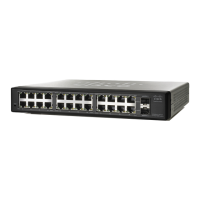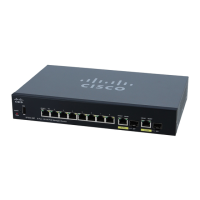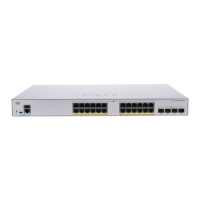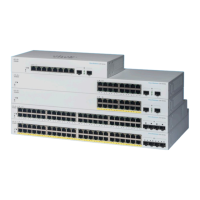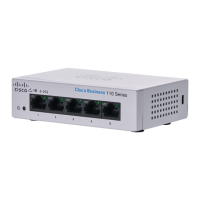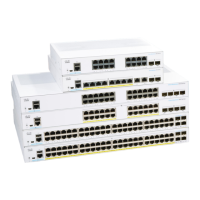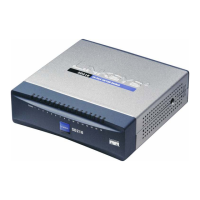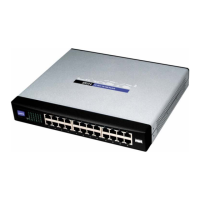Multicast
IP Multicast Group Addresses
Cisco Small Business 200 Series Smart Switch Administration Guide 215
17
• Source IP Address equals to—Define the source IP address of the sending device. If mode is (S,G),
enter the sender S. This together with the IP Group Address is the Multicast group ID (S,G) to be
displayed. If mode is (*.G), enter an * to indicate that the Multicast group is only defined by destination.
STEP 3 Click Go. The results are displayed in the lower block.
STEP 4 Click Add to add a static IP Multicast Group Address.
STEP 5 Enter the parameters.
• VLAN ID—Defines the VLAN ID of the group to be added.
• IP Version—Select the IP address type.
• IP Multicast Group Address—Define the IP address of the new Multicast group.
• Source Specific—Indicates that the entry contains a specific source, and adds the address in the IP
Source Address field. If not, the entry is added as a (*,G) entry, an IP group address from any IP source.
• Source IP Address—Defines the source address to be included.
STEP 6 Click Apply. The IP Multicast group is added, and the device is updated.
STEP 7 To configure and display the registration of an IP group address, select an address
and click Details.
The VLAN ID, IP Version, IP Multicast Group Address, and Source IP Address selected are displayed as
read-only in the top of the window. You can select the filter type:
• Interface Type equals to—Select whether to display ports or LAGs.
STEP 8 For each interface, select its association type. The options are as follows:
• Static—Attaches the interface to the Multicast group as a static member.
• Dynamic—Attaches the interface to the Multicast group as a dynamic member.
• Forbidden—Specifies that this port is forbidden from joining this group on this VLAN.
• None—Indicates that the port is not currently a member of this Multicast group on this VLAN. This is
selected by default until Static or Forbidden is selected.
STEP 9 Click Apply. The Running Configuration file is updated.
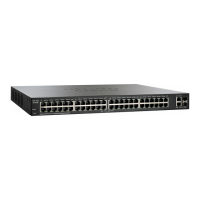
